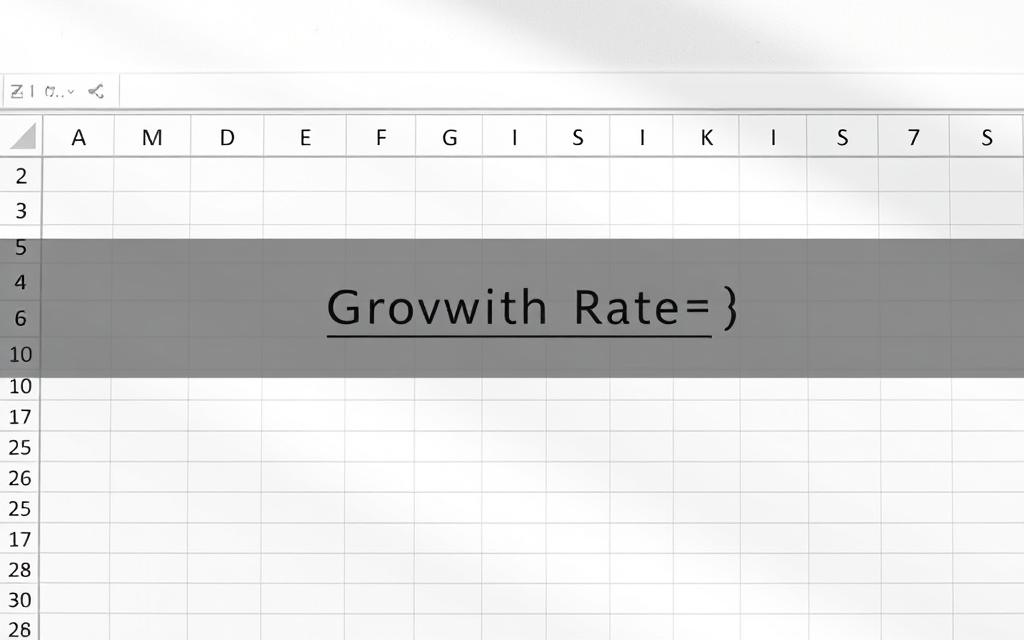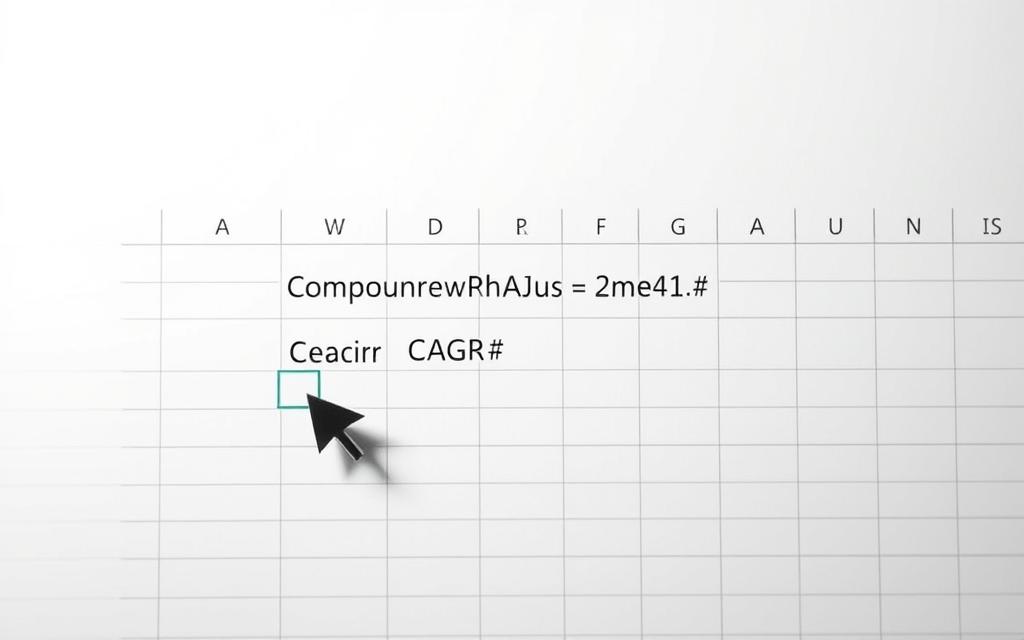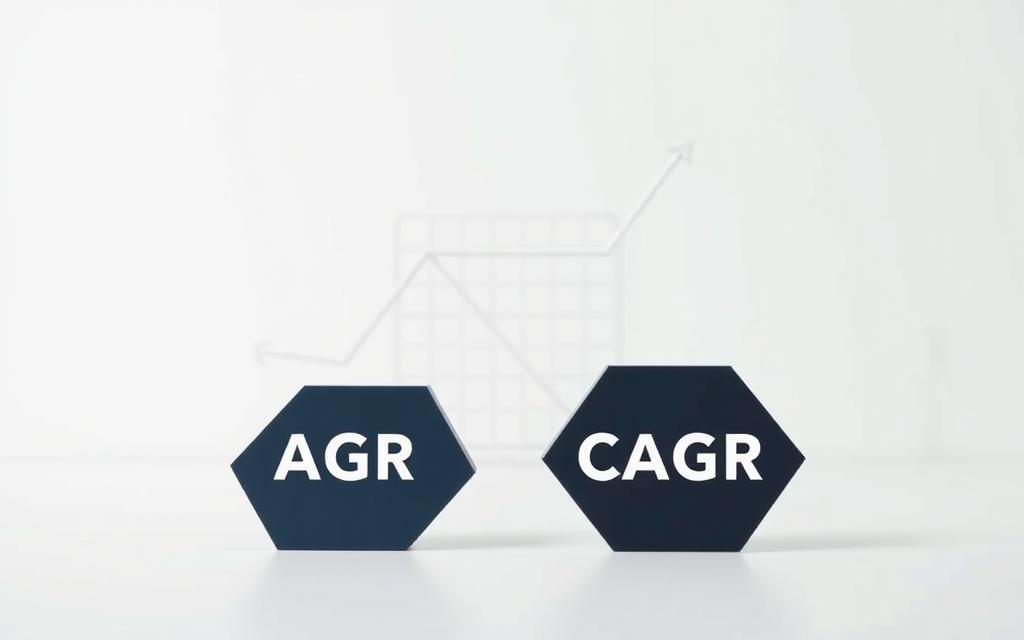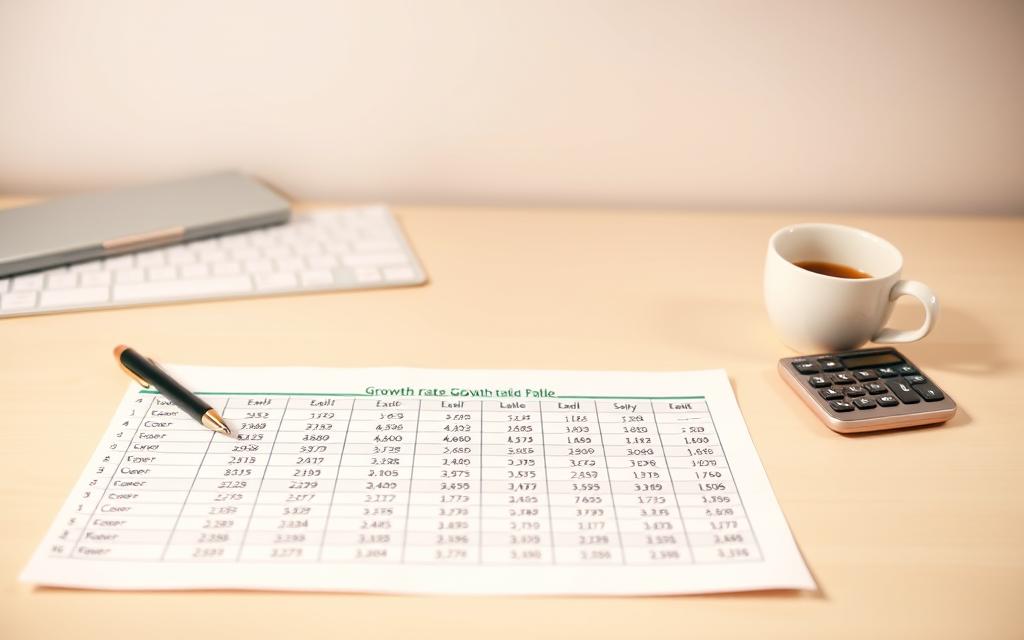Table of Contents
Understanding business performance requires tracking key metrics. One essential measurement is the growth rate, which reveals trends in revenue, sales, or customer expansion. Excel simplifies this process with built-in tools and formulas.
Financial analysts and business owners rely on Excel for accurate calculations. The software offers multiple methods, including basic arithmetic, specialized functions, and automated data integration. Real-world applications range from quarterly reviews to long-term forecasting.
This guide covers fundamental techniques like the GROWTH function and compound annual growth rate (CAGR). You’ll also discover time-saving tricks with add-ons like Coefficient for live data updates. Master these skills to make informed decisions faster.
Understanding Growth Rate and Its Importance
Tracking business progress demands more than just revenue numbers. The growth rate quantifies percentage changes in any metric over time, from customer acquisition to operational costs. This versatility makes it indispensable for data-driven decisions.
| Metric | Role in Growth Analysis |
|---|---|
| Monthly Recurring Revenue (MRR) | Tracks subscription-based income trends |
| Customer Acquisition Cost (CAC) | Measures efficiency of marketing spend |
| Customer Lifetime Value (CLV) | Predicts long-term profitability |
| Churn Rate | Highlights retention challenges |
Investors scrutinize annual growth rate during funding rounds. Consistent expansion signals scalability, while erratic patterns raise red flags. For example, a jump from $100k to $120k revenue reflects a healthy 20% increase.
Growth rate also complements KPIs like net promoter scores. High growth with low customer satisfaction may indicate unsustainable practices. Balance is key.
How to Compute Growth Rate in Excel: Basic Formula
Excel transforms raw numbers into actionable insights with fundamental math. The standard growth rate formula compares changes between two values over time. Apply this to revenue, user counts, or any metric needing analysis.
The Universal Percentage Method
Use this equation to find percentage change:
=(Ending Value – Starting Value) / Starting Value * 100
Format cells as percentage to avoid manual conversion. For a $100k to $120k revenue jump:
- Input starting value (B2: 100000)
- Ending value (C2: 120000)
- Formula: =(C2-B2)/B2*100 yields 20%

Handling Negative Results
A negative outcome indicates decline. For example, $100k to $80k calculates as -20%. Use conditional formatting to highlight these in red for quick review.
| Change Type | Interpretation |
|---|---|
| Absolute ($20k) | Shows raw difference |
| Percentage (20%) | Contextualizes scale relative to start |
Absolute numbers lack context. A $20k drop from $1M is minor (2%), but significant from $100k (20%). Always pair both for full clarity.
Using Excel’s GROWTH Function for Trend Analysis
Strategic planning demands more than historical data—it requires forward-looking insights. Excel’s GROWTH function automates exponential regression, transforming past performance into actionable forecasts.
How the GROWTH Function Works
This function predicts future values using the equation y = b*m^x. It analyzes known y-values (e.g., revenue) and x-values (e.g., years) to project trends. The syntax:
=GROWTH(known_y’s, known_x’s, new_x’s, [const])
- Known_y’s: Historical metrics (required).
- Known_x’s: Time periods (optional).
- New_x’s: Future periods to forecast.
- CONST: Forces b=1 if FALSE (default is TRUE).
Applying the GROWTH Function
For a 4-year revenue dataset projecting Year 5:
- Label columns: Year (A), Revenue (B).
- Enter historical values: A2:A5 (Years 1–4), B2:B5 (Revenue).
- In C6, input: =GROWTH(B2:B5, A2:A5, A6) (Year 5 cell).
The GROWTH function outperforms manual calculations by adjusting for exponential curves. Pair results with visual reports for stakeholder clarity.
Calculating Compound Annual Growth Rate (CAGR)
Long-term financial analysis requires more than simple percentage changes. The compound annual growth rate (CAGR) provides a smoothed annualized return, eliminating the volatility of year-to-year fluctuations. This metric is essential for comparing investments or business performance across multi-year periods.

What Is CAGR?
CAGR measures mean annual growth assuming steady progression between two values. Unlike arithmetic averages, it accounts for compounding effects. A $100k investment growing to $150k over 5 years represents an 8.19% CAGR, not the 10% simple average.
CAGR Formula and Calculation
The standard equation is:
CAGR = (Ending Value / Starting Value)^(1/n) – 1
Where n = number of years. In Excel, implement this as:
- Basic formula: =(C2/B2)^(1/5)-1 (format as %)
- POWER alternative: =POWER(C2/B2,1/5)-1
| Method | Advantage |
|---|---|
| CAGR | Smooths irregular growth patterns |
| Simple Average | Overstates returns with volatility |
Stock analysts frequently use CAGR to compare companies. A tech firm might show 40% growth one year and 5% the next, while its 15% compound annual growth tells the true story. This metric also helps evaluate mutual funds or retirement portfolios.
Average Annual Growth Rate (AAGR) vs. CAGR
Financial metrics often demand deeper analysis than surface-level comparisons. The average annual growth rate (AAGR) and compound annual growth rate (CAGR) serve distinct purposes, despite both measuring progress over time.

Key Differences at a Glance
| Metric | Calculation | Best For |
|---|---|---|
| AAGR | (GR1 + GR2 + …GRn)/N | Linear trends, short-term analysis |
| CAGR | (End Value/Start Value)^(1/n) – 1 | Volatile data, long-term projections |
AAGR calculates a simple mean of annual rates, ignoring compounding effects. For example, a SaaS company with 10%, 20%, and -5% yearly growth shows a misleading 8.3% AAGR, masking customer churn risks.
CAGR smooths irregularities by assuming steady compound annual growth. The same SaaS data yields a 7.2% CAGR, reflecting the net effect of volatility.
When to Use Each Metric
- AAGR: Quick comparisons of stable, short-term data.
- CAGR: Evaluating investments or multi-year business performance.
In Excel, AAGR requires manual averaging of yearly percentages, while CAGR uses the POWER function. Always pair these metrics with visual trendlines for context.
Step-by-Step Guide to Building a Growth Rate Table
Structured data presentation enhances accuracy in financial analysis. Excel tables transform raw numbers into clear trends, enabling faster decision-making. Follow this guide to create a dynamic growth rate table with automated calculations.

Setting Up Your Data
Begin by labeling columns for Year (date format), Value (currency), and Growth Rate (percentage). For example:
| Column | Format | Example |
|---|---|---|
| Year | Date (YYYY) | 2023 |
| Value | Currency ($) | $150,000 |
| Growth Rate | Percentage (%) | 12.5% |
Use cell references to link formulas. For growth rate, input =(C3-C2)/C2 in D3 and drag down. Apply conditional formatting to highlight negative values in red.
Automating Calculations
Streamline workflows with these techniques:
- Absolute references (e.g., $C$2) lock data points for multi-year CAGR formulas.
- Dynamic summary cells auto-update using =AVERAGE(D3:D6) for AAGR.
- Data validation restricts inputs to valid dates/numbers, preventing errors.
For CAGR, use =POWER(C6/C2,1/5)-1 in a dedicated summary column. Format results as percentage for consistency.
Common Mistakes to Avoid
Accurate growth rates depend on precise inputs and consistent methods. Even experienced analysts make errors that skew results. Recognizing these pitfalls improves data reliability.
Starting value selection impacts all calculations. Using the wrong baseline—like Q4 revenue instead of Q1—distorts percentage changes. Always verify reference points before applying formulas.
Mismatched period time frames create false comparisons. Monthly and annual data require separate analyses. For example, comparing January revenue to full-year results yields meaningless percentages.
Formatting issues frequently cause confusion:
- Cells displaying decimals instead of percentages
- Unformatted currency symbols in value columns
- Date fields reading as text rather than numerical values
The GROWTH function fails when misapplied. Common triggers for #NUM! errors include:
Using negative historical values
Omitting required known_y’s arguments
Incorrect new_x’s range sizing
Debug techniques involve step-by-step checks:
- Verify all cell references point to correct ranges
- Test formula components separately
- Use Excel’s Formula Auditing tools
For advanced troubleshooting, consult Excel growth rate guides covering edge cases. Proper validation ensures trustworthy metrics for decision-making.
Tools and Templates
Efficient financial analysis requires the right tools to simplify complex calculations. Modern platforms like Coefficient and Facta transform raw data into actionable insights with minimal manual effort.
Coefficient bridges Excel and live business data through Google Sheets integration. Key features include:
- Automatic revenue data pulls from CRM systems
- Pre-built templates for MRR and CMGR analysis
- Real-time refresh without formula adjustments
For advanced visualization, Facta Insights delivers interactive dashboards. Users generate polished reports with:
Customizable growth trend visualizations
Benchmarking against industry standards
Collaborative annotation tools
| Method | Refresh Time | Error Risk |
|---|---|---|
| Manual Updates | 15-30 minutes | High (formula breaks) |
| Automated Tools | Instant | Low (validated connections) |
Download our free Excel template for quick-start investment tracking. The pre-formatted sheets include:
- CAGR calculators with error checks
- Monthly/quarterly comparison views
- Dynamic charts for presentations
Automated tools reduce analysis time by 70% compared to manual methods. Focus on strategic decisions rather than data wrangling.
Conclusion
Mastering financial analysis in Excel unlocks powerful insights for any business. From basic percentage changes to advanced CAGR calculations, these methods reveal true performance trends.
The compound annual growth rate stands out for long-term evaluations. Unlike simple averages, it smooths volatility for reliable comparisons across years. Automation tools further enhance accuracy with real-time data integration.
For consistent results:
- Review calculations quarterly
- Cross-verify with visual charts
- Use pre-built templates for complex formulas
Elevate your analytics skills with specialized courses on financial modeling. Accurate metrics drive smarter decisions at every level.
FAQ
What’s the difference between CAGR and AAGR?
A: Compound Annual Growth Rate (CAGR) measures consistent yearly returns, smoothing volatility. Average Annual Growth Rate (AAGR) calculates simple yearly averages, ignoring compounding effects.
Can Excel automatically calculate growth rates?
Yes. Use the GROWTH function for trend-based predictions or manual formulas like (Ending Value/Starting Value)^(1/Periods)-1 for CAGR.
Why does my growth rate show negative values?
Negative results indicate a decline over the investment period. Verify starting and ending values to confirm data accuracy.
How do I visualize growth rates in Excel?
Create line charts or column graphs from your data to display trends. Highlight percentage changes for clarity.
What’s the fastest way to compute CAGR for multiple investments?
Use Excel’s POWER function or a prebuilt template to apply the formula across rows. Ensure consistent time periods for accuracy.









